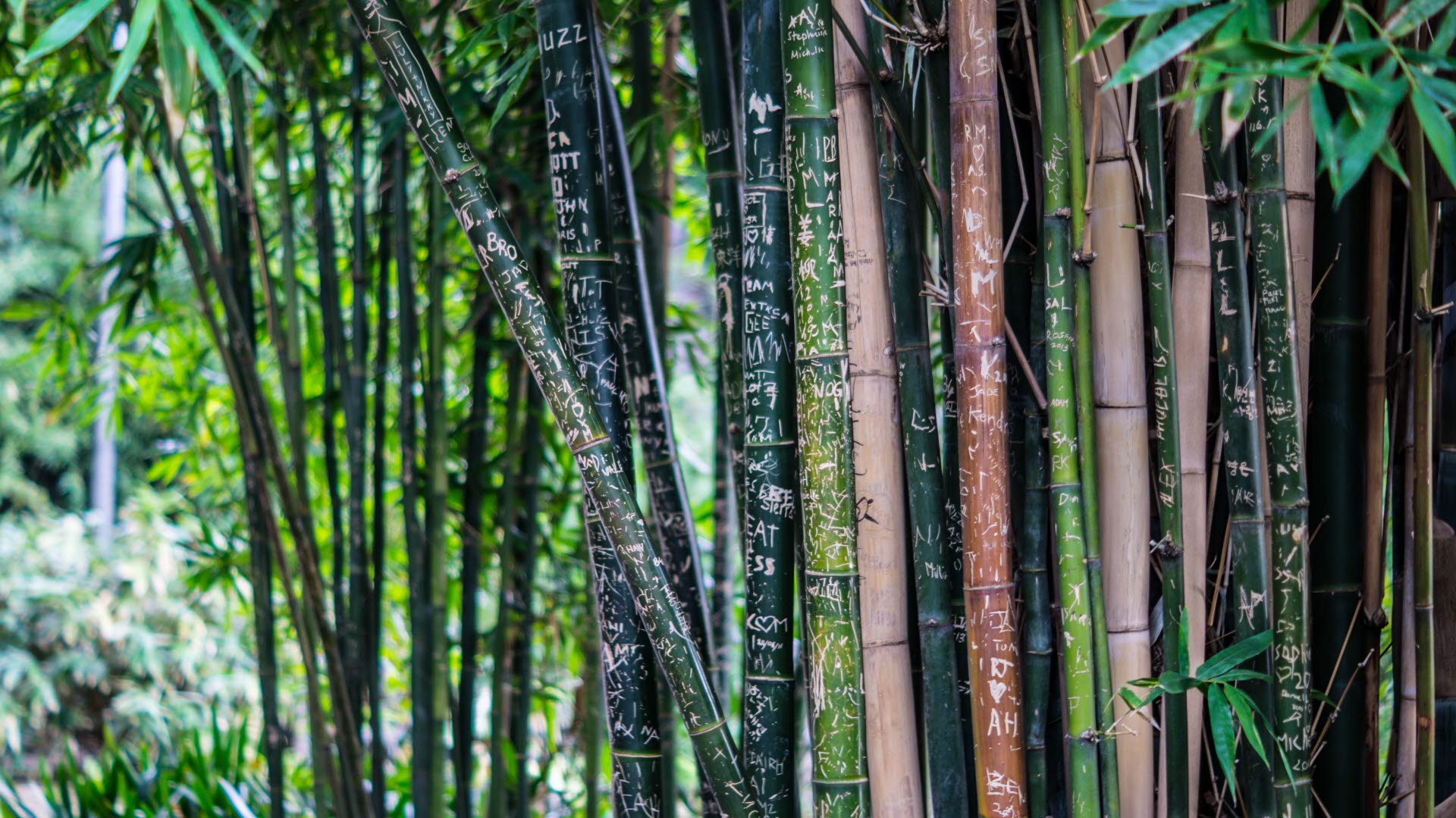Types of bamboo plant – Bamboo plants, renowned for their versatility and resilience, encompass a diverse array of species with unique characteristics and applications. This comprehensive guide delves into the fascinating world of bamboo plants, exploring their scientific names, common names, and the distinct features that set each species apart.
From towering giants to graceful groundcovers, bamboo plants exhibit a remarkable range of sizes and growth patterns. Their adaptability to various climates and soil conditions makes them a valuable resource for construction, landscaping, and culinary purposes. Dive into the captivating world of bamboo plants and discover the myriad ways they enrich our lives.
Types of Bamboo Plants

Bamboo, a remarkable group of plants belonging to the grass family Poaceae, exhibits remarkable diversity, with over 1,500 species distributed across tropical and subtropical regions of the world. These plants are renowned for their versatility, offering a wide range of applications in various industries. Their exceptional strength, durability, and rapid growth make them highly valuable resources.
Common Bamboo Species
- Phyllostachys edulis (Moso bamboo): Native to China, this species is the largest bamboo, reaching heights of up to 100 feet (30 meters). Its thick culms (stems) are used in construction, furniture, and papermaking.
- Phyllostachys aurea (Golden bamboo): Originating from China, this bamboo is prized for its striking golden culms. It is widely used as an ornamental plant in landscaping and gardens.
- Bambusa vulgaris (Common bamboo): A native of Southeast Asia, this species is commonly used for construction, scaffolding, and furniture making. It is known for its adaptability and tolerance to various environmental conditions.
- Dendrocalamus giganteus (Giant bamboo): Found in Southeast Asia, this bamboo is one of the largest, reaching heights of up to 130 feet (40 meters). Its culms are used in construction, flooring, and papermaking.
- Sasa palmata (Arrow bamboo): Native to Japan, this bamboo forms dense thickets and is often used in landscaping. Its culms are used for making arrows, baskets, and other crafts.
Bamboo Plant Anatomy and Physiology

Bamboo plants exhibit a unique anatomy and physiology that contribute to their remarkable growth and adaptability. Their structural components and physiological processes enable them to thrive in diverse environments and provide numerous benefits.
The structural components of bamboo plants include their stems, leaves, and rhizomes. The stems, also known as culms, are hollow and segmented, providing both strength and flexibility. The leaves are long and narrow, with a parallel venation pattern that maximizes sunlight absorption for photosynthesis. Rhizomes are underground stems that spread horizontally, creating new shoots and anchoring the plant in the soil.
Photosynthesis
Bamboo plants undergo photosynthesis, the process by which they convert sunlight into energy. The leaves contain chlorophyll, a green pigment that absorbs light energy from the sun. This energy is used to convert carbon dioxide and water into glucose, a sugar molecule that serves as the plant’s primary energy source.
Water Absorption and Nutrient Transport, Types of bamboo plant
Bamboo plants absorb water and nutrients through their roots. The roots are fibrous and extensive, allowing the plant to access water and nutrients from a large volume of soil. The water is transported up the stem through a network of xylem vessels, while the nutrients are transported up through the phloem vessels.
Cultivation and Uses of Bamboo Plants

Bamboo plants are remarkably versatile and resilient, making them ideal for cultivation in various environments. With proper care, these plants can thrive and offer a wide range of benefits. Understanding their cultivation requirements and exploring their diverse uses can empower us to harness their potential sustainably.
Cultivation Techniques
Cultivating bamboo plants requires meticulous attention to soil preparation, planting techniques, and ongoing maintenance practices.
- Soil Preparation: Bamboo plants prefer well-drained, fertile soil with a pH between 5.5 and 7.0. Prior to planting, it is essential to amend the soil with organic matter, such as compost or manure, to improve its structure and fertility.
- Planting Techniques: Bamboo plants can be propagated through rhizomes or culms (stems). Rhizomes are underground stems that can be divided and planted directly into the soil. Culms, on the other hand, can be used to create cuttings that are then rooted in a potting mix before being transplanted into the ground.
- Maintenance Practices: Bamboo plants require regular watering, especially during the growing season. Mulching around the plants helps retain moisture, suppress weeds, and regulate soil temperature. Pruning is also essential to control the growth and shape of the plants, as well as to remove dead or diseased culms.
Uses of Bamboo Plants
Bamboo plants have a multitude of uses, ranging from construction materials to food sources and ornamental landscaping.
- Construction Materials: Bamboo culms are incredibly strong and durable, making them ideal for use in construction. They can be used to create a variety of structures, including houses, bridges, and furniture.
- Food Sources: Young bamboo shoots are edible and are often used in Asian cuisine. They are a good source of fiber, vitamins, and minerals.
- Ornamental Landscaping: Bamboo plants are highly valued for their ornamental value. They can be used to create privacy screens, hedges, and windbreaks. Their lush foliage and graceful culms add an exotic touch to any landscape.
